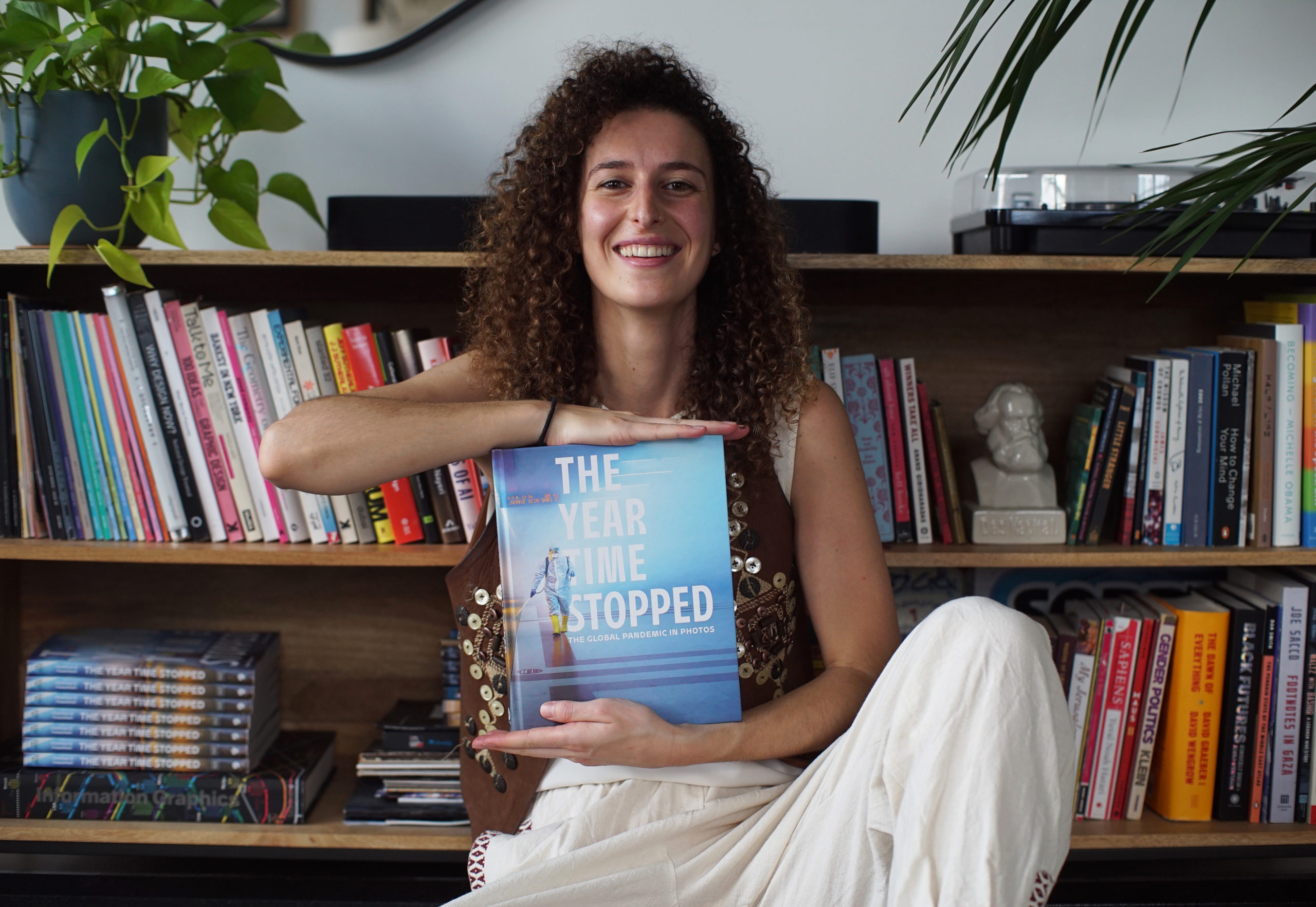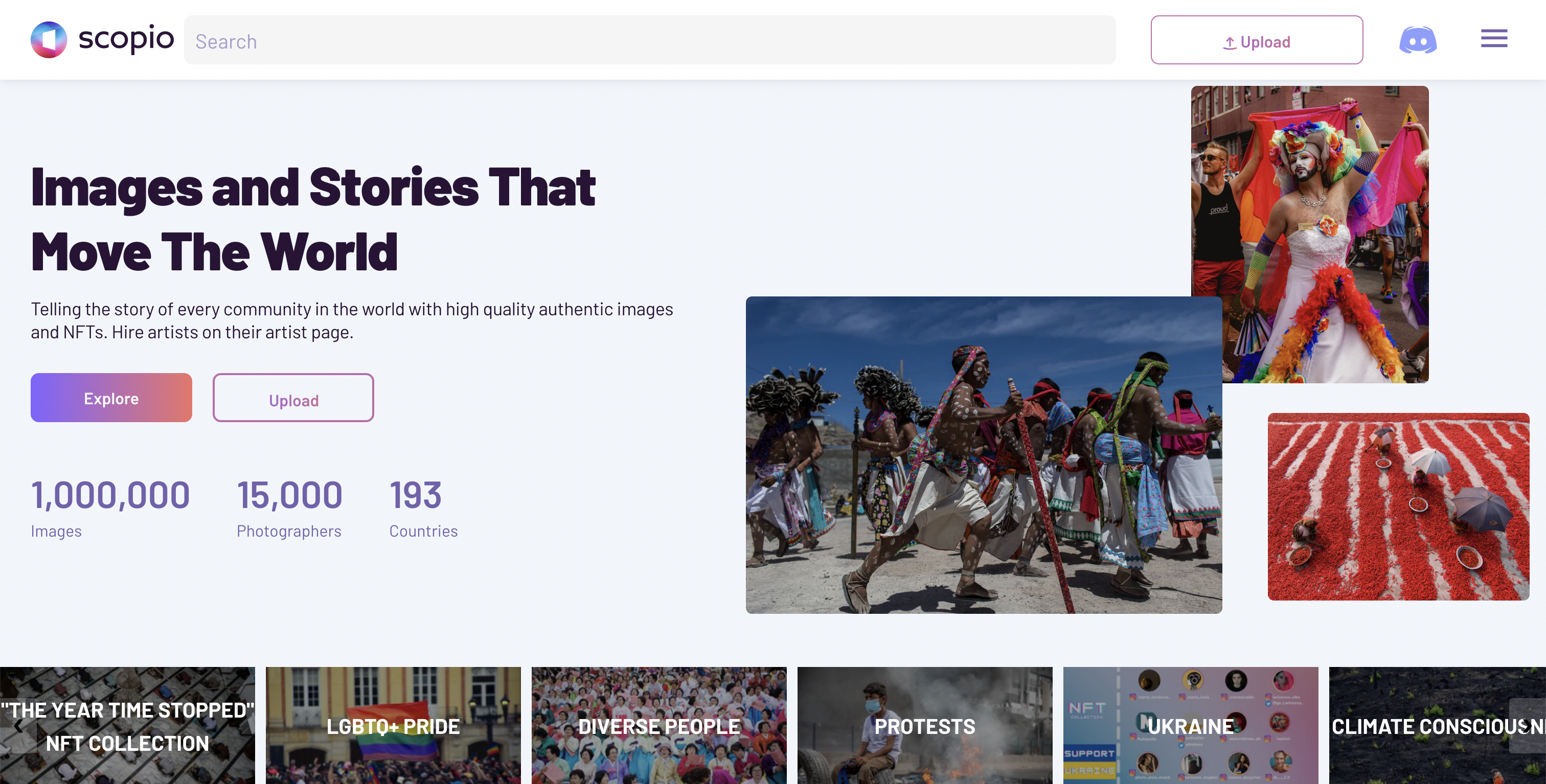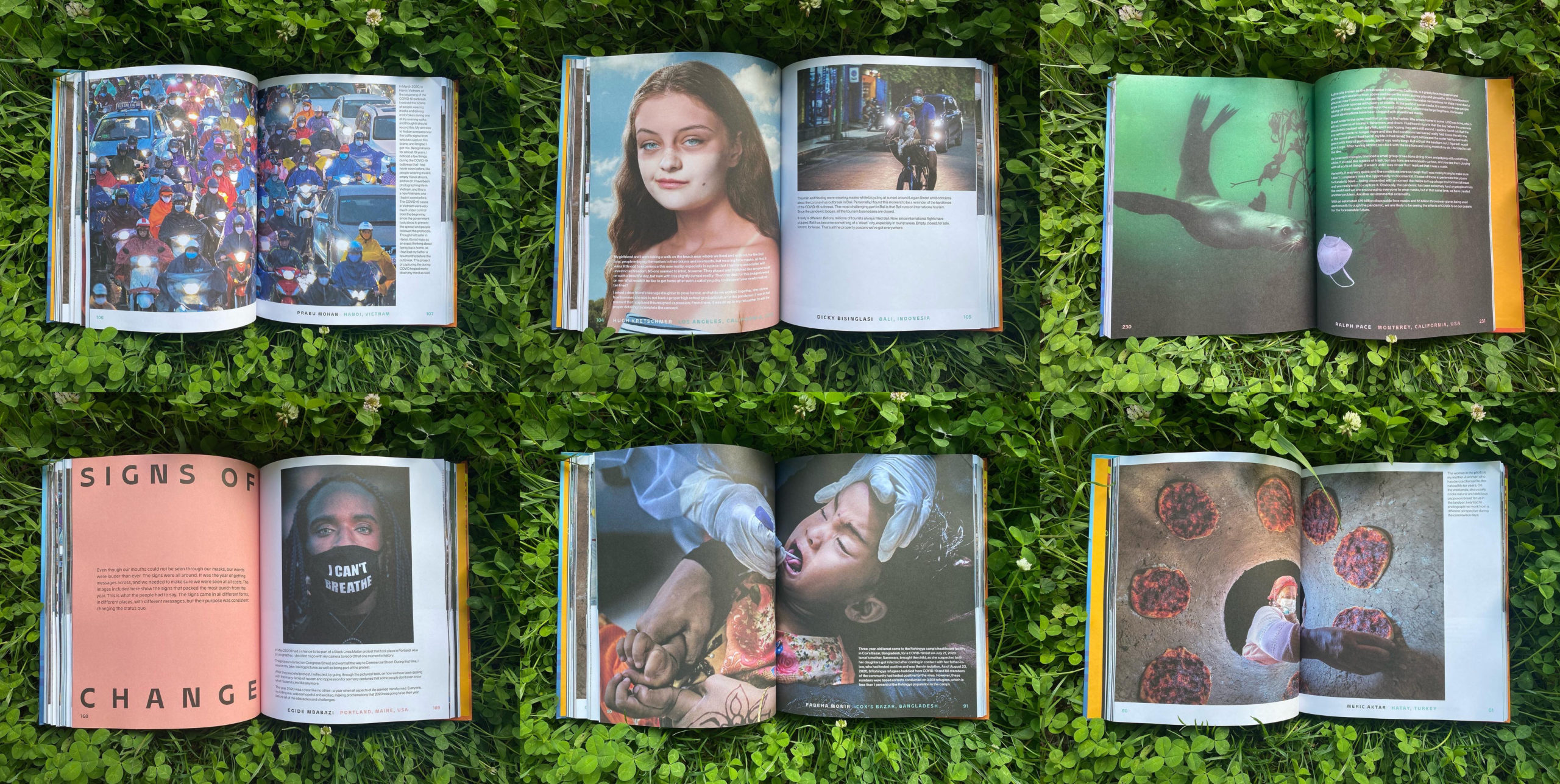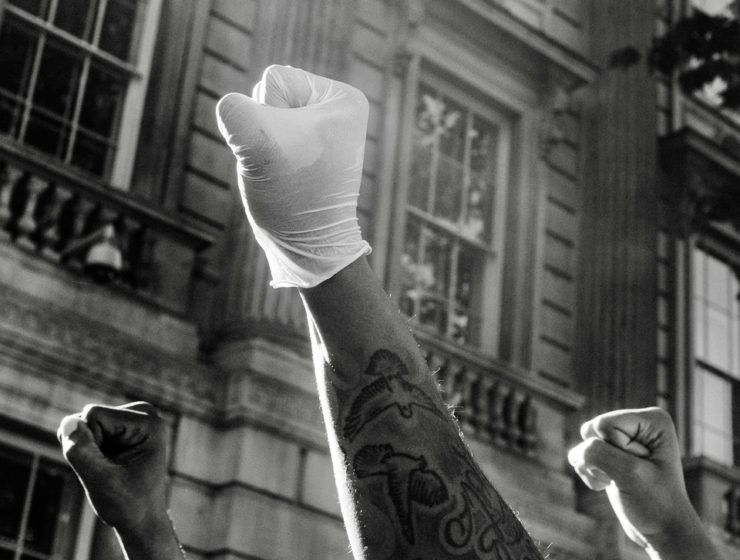‘Scopio’ stands for ‘Scope it out’. Acting as a one-stop hub to provide anyone, anywhere a supportive environment where they can comfortably and quickly build their dreams. The platform grants access to an abundant global community of talented artists and has impressively developed, what they describe as, the easiest way to license and sell work or hire artists, in less than 3 minutes. So far, this platform already holds over 700,000 works, represents over 14,000 emerging artists and connects globally with over 160 countries.
Did you know that 1.8 billion photos are posted on social media every day?
Speed is a priority for this platform as they realise the importance of keeping up with the swiftly evolving news, contents and trends in the metaverse.
In this interview, ART3 discusses this new, proudly diverse, platform with innovative founder Nour Chamoun (@chamounista). We at ART3 are keen to support those working to build in the #NFTPhotography space as we share a common mission to explore photography in the Metaverse. Scopio especially caught our eye with the recent publication of their book, “The Year Time Stopped”, which features 200 photos and stories captured from photographers around the world during the pandemic in 2020. This project runs hand-in-hand with our 2021 Editions365 collection and lends nicely to set the scene for our current Open Call for this year’s volume. Edition365 2022 is currently accepting submissions here.
ART3: What would you say is the elevator pitch for the Scopio platform?
Scopio is a photography-focused storytelling platform where anyone can share images from around the world. It is the first female founded NFT marketplace, with the goal of elevating human stories told by people from underrepresented communities and regions. Our vision is to distribute the world’s images so they can make their place in history.
ART3: How did you get involved in creating this platform?
I was always interested in social movements for change around the world and how they were documented, that’s how Scopio started. I met my now cofounder in 2014 when people were starting to share images of global protests on social media. So we built a platform where new organizations could search and license these images. The software later evolved into a marketplace and we broadened our scope to story-based imagery rather than just photojournalism.
ART3: Which blockchains do you support and why?
We use the Solana blockchain because it’s more cost efficient for photographers to mint their images, making it more accessible to emerging artists. The other reason is because each translation on its blockchain has a minimal environmental impact, unlike other blockchains.
ART3: We are aware that your platform is impressively diverse, what method do you use to find artists from across the globe?
We mostly use Instagram as a way to find photographers and where photographers can also discover us. The stock photo industry has been traditionally elitist where professional photographers needed expensive camera gear and needed to know photo licensing jargon in order to be able to sell their photos. We wanted to break down the barrier to entry for emerging photographers and give them an easy way to access our platform. We value diverse and authentic storytelling more so than what camera you’re using.
ART3: How does your platform work to highlight diversity?
We always aim to tell stories that are often underrepresented or misrepresented and we primarily focus on the global south, because we know that there has always been an imbalance in who owns the narrative and who has always gotten the upperhand in telling their stories, so we always work to shift that imbalance.
ART3: Who are your clients?
Any organization or individual looking to tell meaningful stories through authentic photography. They range from non-profits, to new organizations, to brands, to freelancers, to designers.
ART3: You have recently published an award-winning photo-book documenting the pandemic, can you share Scopio’s inspiration for the project and explain what it’s all about?
Our book, “The Year Time Stopped”, features 200 photos and stories captured from photographers around the world during the pandemic in 2020. We wanted to tell stories mostly from underrepresented communities globally. Our purpose for publishing the book is to change the way people around the world can look back at that year, the world’s darkest year in recent history, and see the resilience of the human spirit photographed. I hope that it would serve as a historical record and time capsule for the year of the pandemic, so it can be shared with generations to come.
ART3: Where can people find the book?
Anywhere they get their books from! You can find all of the major retailers listed here.
ART3: Did the pandemic affect the development of your platform and if so how did you overcome those unforeseen challenges?
Our platform actually grew a lot during the pandemic because more photographers and creatives went online to discover art or promote their own work. We thrived by building a community of photographers and showcasing their best work or interviewing them.
ART3: What’s on the horizon for Scopio, what are your current goals?
Our goal is to be the platform that tells the story of every community around the world as authentically as possible. In order to do that, we would need to scale from one million photos, which is what we currently have, to 1 billion images that tell powerful and moving stories.







